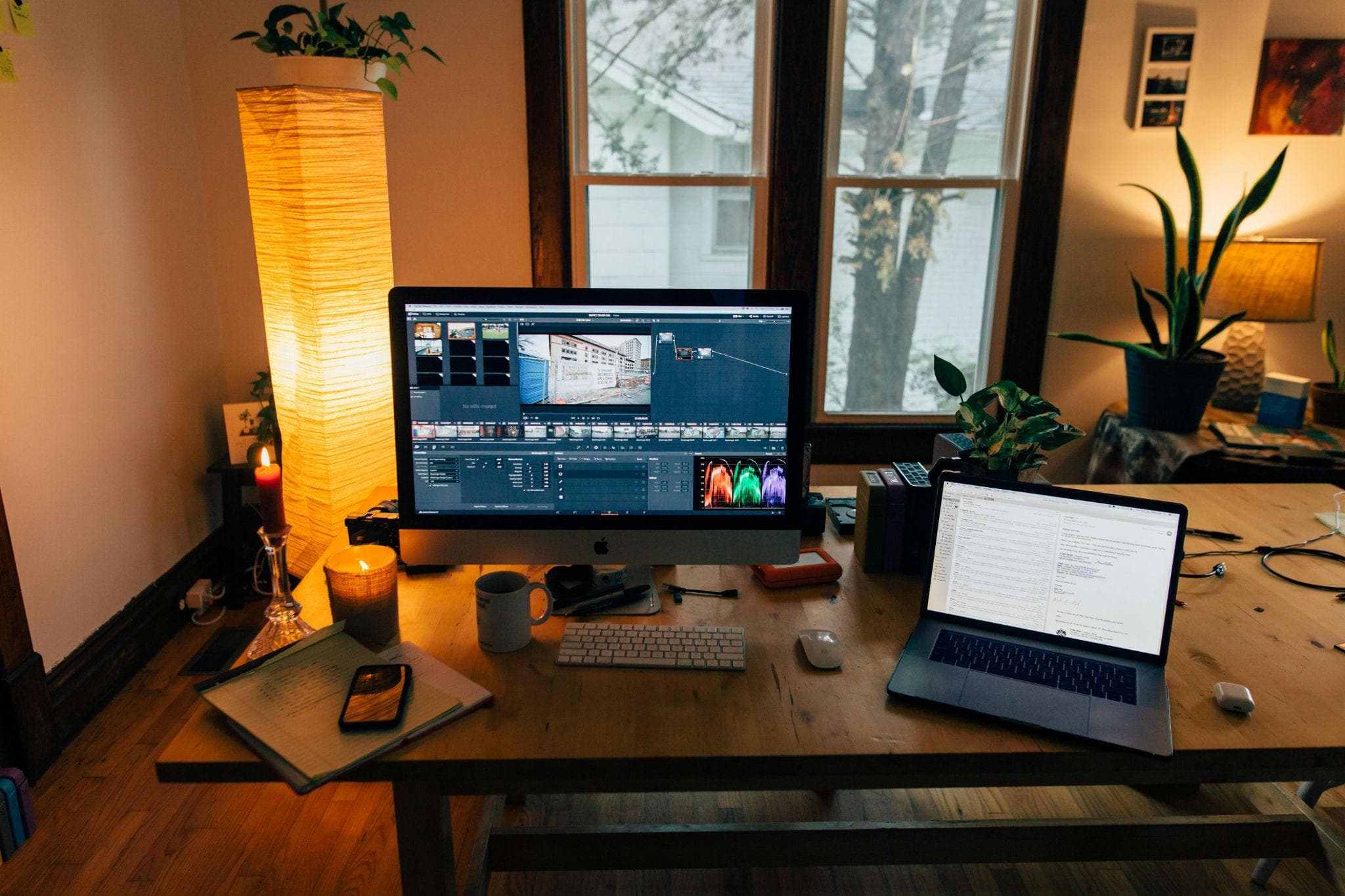Editing photos and videos can be a demanding task that requires long hours in front of a computer. Despite the creative satisfaction it brings, the physical strain from prolonged sitting can lead to significant discomfort and health issues. This article provides essential ergonomic tips to help video and photo editors create a more comfortable and healthy workspace, addressing common issues like back pain, neck tension, wrist strain, and eye fatigue.
Section 1: The Biomechanical Impact of Prolonged Sitting
Prolonged sitting, especially without proper ergonomic support, can strain the body from the neck down to the feet. Poor posture often results in increased cervical lordosis and tension in the trapezius muscles, leading to pain and discomfort. Additionally, sitting for extended periods can cause the spine to arch forward unnaturally, weakening muscles and causing biomechanical instability. This imbalance not only predisposes individuals to chronic issues like herniated discs but also compromises overall mobility. Furthermore, prolonged sitting on hard or non-ergonomic surfaces can lead to pressure injuries, such as bed sores or pressure ulcers, particularly in the coccyx or tailbone area.
Section 2: Setting Up an Ergonomic Workspace
Desk and Chair Ergonomics
Creating an ergonomic workspace starts with the right desk and chair. Choose a chair that provides proper lumbar support to maintain the natural curvature of your spine. The desk should be at a height where your elbows are at a 90-degree angle when typing, and your feet should be flat on the floor or on a footrest. This setup helps reduce strain on your back and shoulders, promoting a healthier posture.
Computer and Monitor Placement
Proper monitor placement is crucial to avoid neck and eye strain. The top of your monitor should be at or slightly below eye level, about an arm’s length away from your face. If you’re using a laptop, consider using an external monitor or a laptop stand to raise the screen to eye level. This adjustment allows you to sit up straight and reduces the need to hunch over, which can lead to neck and back pain.
Section 3: Ergonomic Tools and Accessories
Keyboards and Mice
Using ergonomic keyboards and mice can significantly reduce wrist strain. Look for keyboards that are slightly raised in the back, allowing for a more natural hand position. Mice should fit comfortably in your hand, with a rounded back that supports your palm. Wrist supports can also help by preventing your wrists from bending upwards, which can cause discomfort during long editing sessions.
Lumbar Support and Seat Cushions
Integrating lumbar support pillows and pressure relief seat cushions into your seating arrangement can improve posture and comfort. Lumbar support pillows help maintain the natural curve of the spine, while pressure relief cushions distribute body weight evenly, reducing the risk of pressure sores and tailbone pain. This combination is particularly beneficial for those who spend long hours sitting, as it supports proper spinal alignment and minimizes pressure points. Read more about the lumbar support on Ortseat website.
By setting up your workspace with these ergonomic considerations, you can enhance your comfort and reduce the health risks associated with prolonged sitting, allowing you to focus on your creative work without the distraction of physical discomfort.
Section 4: Reducing Eye Strain
Prolonged screen time during editing sessions can lead to significant eye strain. Here are effective ways to reduce this strain:
- Reduce Glare: Position your monitor to minimize glare from windows or overhead lights. Use anti-glare screen protectors if necessary.
- Adjust Monitor Settings: Ensure your monitor brightness is appropriate for the room lighting. Use larger fonts and icons to reduce the need for squinting.
- Take Regular Breaks: Follow the 20-20-20 rule: every 20 minutes, look at something 20 feet away for at least 20 seconds. This helps reduce eye fatigue and strain.
- Optimize Monitor Placement: Keep the monitor at least an arm’s length away and position the top of the screen at or slightly below eye level to avoid neck strain.
Section 5: Incorporating Movement and Breaks

Incorporating regular movement and breaks into your editing routine is crucial for maintaining health and productivity:
- Scheduled Breaks: Set a timer to remind yourself to take short breaks every 30-60 minutes. Use this time to stand up, stretch, or walk around to improve circulation and relieve muscle tension.
- Stretching Exercises: Perform simple stretches to relax your muscles. Focus on stretching your neck, shoulders, back, and legs to prevent stiffness and improve flexibility.
- Standing Desks: Consider using a standing desk or a convertible desk that allows you to alternate between sitting and standing. This change in position can reduce the strain on your lower back and improve overall posture.
Section 6: Personalizing Your Workspace
Creating a workspace that suits your personal needs and comfort can greatly enhance your editing experience:
- Adjustable Furniture: Invest in adjustable furniture, such as chairs with customizable lumbar support and desks with adjustable heights. This allows you to tailor your workspace to your body’s needs.
- Personal Comfort Items: Incorporate items that increase your comfort, such as footrests, ergonomic mouse pads, or keyboard wrist rests. These small additions can make a significant difference in reducing strain.
- Optimal Lighting: Ensure your workspace is well-lit with a combination of natural and artificial lighting. Use task lighting to illuminate your work area without causing glare on your screen.
- Organized Setup: Keep your workspace organized to reduce clutter and enhance efficiency. Place frequently used items within easy reach to avoid unnecessary stretching or straining.
By integrating these ergonomic tips and personalizing your workspace, you can create a comfortable and efficient environment that supports your health and productivity during long editing sessions.
Final Thoughts
Ergonomics play a crucial role in ensuring comfort and maintaining health during long editing sessions. By understanding the biomechanical impacts of prolonged sitting and implementing a well-designed ergonomic workspace, editors can significantly reduce the risks of back pain, neck tension, wrist strain, and eye fatigue. Utilizing ergonomic tools such as lumbar support pillows, pressure relief seat cushions, and properly placed monitors can enhance posture and comfort. Additionally, incorporating regular movement and breaks into your routine, along with personalizing your workspace to meet your individual needs, can create a more productive and enjoyable editing experience. Taking these proactive steps not only supports your long-term health but also allows you to focus on your creative work without the distraction of physical discomfort.



